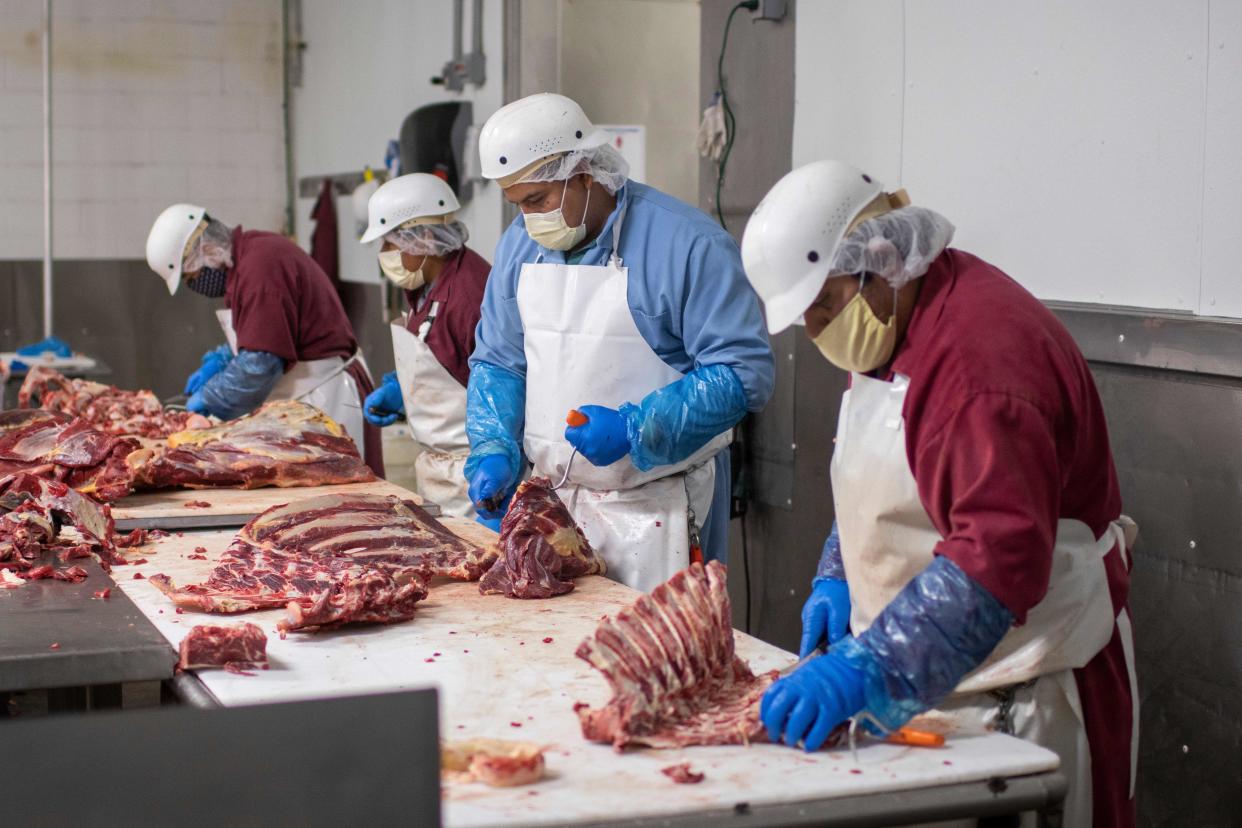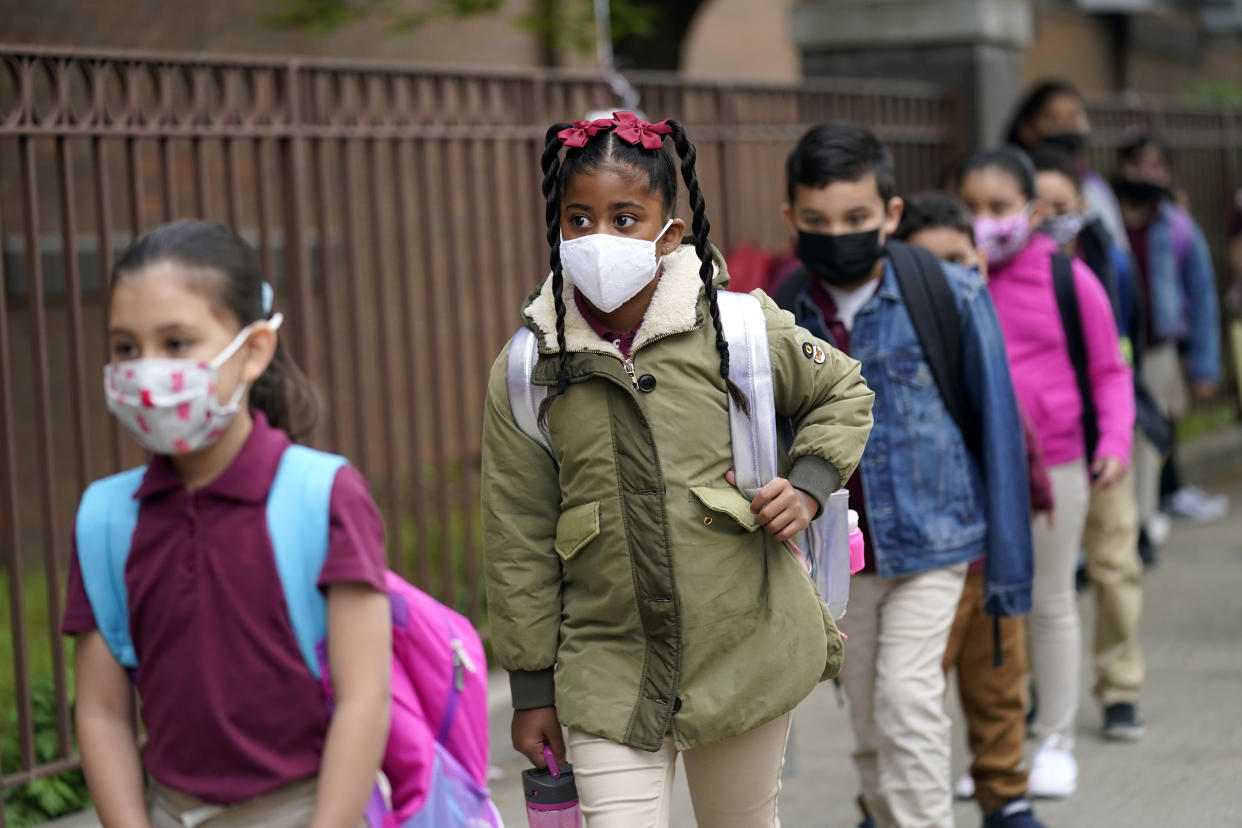CDC director defends controversial mask guidance
WASHINGTON — Dr. Rochelle Walensky, director of the Centers for Disease Control and Prevention, went to Capitol Hill on Wednesday to justify her agency’s proposed budget, only to confront pointed questions on last Thursday’s surprising and controversial guidance that vaccinated people no longer have to wear masks in most situations.
A renowned HIV/AIDS researcher new to national politics, Walensky had been confronted by aggressive questioning from GOP legislators in previous Capitol Hill appearances. This time she stuck to agency talking points on the new guidance, even if that did little to resolve the confusion from Thursday’s announcement.
“The country is not uniform,” she said at one point. “You really do need to interpret our guidance in the context of what is happening in your community.” The problem, though, is that there could once again arise a patchwork of rules, as was the case when the pandemic began.
In both cases, the face mask — to wear it or not; to make masking mandatory or voluntary — is at the center of the controversy.

And whereas mask mandates were seen as a sign of adherence to science until very recently, the science now says that vaccinated people are at virtually no risk of becoming ill with COVID-19, the disease caused by the coronavirus. Nor do the vaccinated act as passive carriers of viral particles that could still sicken unvaccinated people. That had Sen. Mike Braun, R-Ind., wondering if continued mandates are “unnecessary.”
Walensky, who earlier in her tenure sometimes contradicted agency messaging, retorted that the United States is “not a homogenous country,” defending the decision to let states and localities decide on how to implement the new guidance.
To seemingly illustrate how difficult that can make life for an ordinary person, Sen. John Kennedy, R-La., asked if he, having been fully vaccinated, needed to wear a mask if he were to walk from the Senate to the House side of the U.S. Capitol complex, a walk that would presumably take him past vaccinated and nonvaccinated individuals alike.
“Those are locally driven policies,” Walensky said, adding that “every community, every county has different rates of disease and different rates of vaccination.”
Although the CDC has lifted masking recommendations for vaccinated people, it did not tell governors and local leaders at which infection and vaccination rates they could drop mask mandates. That has left many of those same leaders — Democratic ones in particular — trying to figure out how to interpret the new advice.

“What’s different about the House,” Kennedy asked Walensky, “do you know?”
“I don’t know the rate of vaccination around the Capitol, nor the rate of disease around the Capitol, off the top of my head,” Walensky replied.
Kennedy appeared to be emphasizing how what for him was an everyday experience — that is, walking through his workplace — involved complex calculations of safety and risk. With the new guidance, people are forced to make those calculations as they did when the pandemic began. Mask mandates had removed some of that pressure, but they have fallen away in much of the country.
If anything, Wednesday was evidence that lawmakers are just as confused as ordinary Americans. To be sure, some of that confusion may be posturing for cable news. But there were also questions from Democrats, including Sen. Tammy Baldwin of Wisconsin, that could not be dismissed as mere outrage theater.
“What should workplaces be doing right now?” Baldwin wondered. She was especially concerned with food-processing plants, of which Wisconsin has a high number. Many such plants, she said, were “crowded facilities where there’s going to be a mix of vaccinated and unvaccinated workers.” There were coronavirus outbreaks in a number of meat-processing plants last spring.

United Food and Commercial Workers International, a union representing people in the food service industry, has charged that the new guidance “fails to consider how it will impact essential workers who face frequent exposure to individuals who are not vaccinated and refuse to wear masks.” Those workers, the union worries, could be forced to “become the vaccination police,” asking people about their status and, potentially, pleading with them to mask up.
Such exchanges sometimes turned violent last spring, as then-President Donald Trump and some of his supporters made masking a political issue.
The CDC has said it will update guidance for workplaces and other settings but has given no indication of when such revisions will come. Last week’s new masking guidance caught even the White House by surprise.
Masking guidance for schools remains another contentious matter. Adolescents can now get the vaccines, but children under the age of 12 cannot. At the same time, children appear to be at much lower risk than adults for contracting and spreading the coronavirus. That makes the question of whether they need to wear masks especially fraught.

“There’s confusion still,” said Sen. Shelley Moore Capito, R-W.Va. “Who is the ultimate decider here?”
Walensky said that “vaccines are coming for youth,” predicting they would be available for those under 12 years of age by the end of 2021. She added that schools should “not change anything” for now, meaning that children should continue to wear masks and maintain a distance of 3 feet between each other in the classroom.
Even though plenty of confusion remains, both public health officials and elected leaders seem to agree that the nation has reached a crucial moment in the fight against the coronavirus. For all its imperfection, the new mask guidance is a sign of progress, if not yet of outright victory.
Capito described learning of the mask guidance during a meeting of several senators with President Biden on infrastructure spending. “I cannot tell you how joyful we all were,” she said, “as we ripped our masks off and had a great meeting after that.”
____
Read more from Yahoo News:



